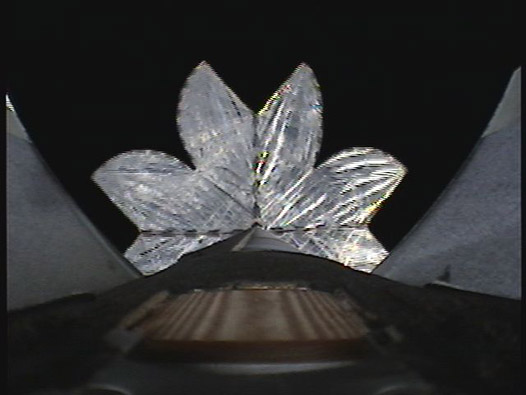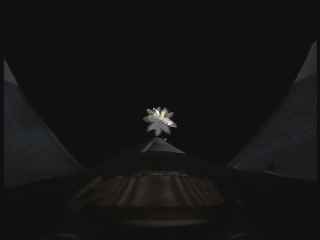TOP > Topics > 2004 > ISAS Deployed Solar Sail Film in Space
![]()
ISAS Deployed Solar Sail Film in Space
ISAS succeeded in deploying a big thin film for solar sail in space for the first time in the world.
ISAS launched a small rocket S-310-34 from Uchinoura Space Center in Kagoshima, Japan, at 17:15, August 9, 2004 (Japan Standard Time). The launch was the culmination of a historic new technology, and the success this time has really made a great achievement in the history of solar sail.
A solar sail is a spacecraft without a rocket engine. It is pushed along directly by light particles from the Sun, reflecting off its giant sails. Because it carries no fuel and keeps accelerating over almost unlimited distances, it is the only technology now in existence that can one day take us to the stars.
Although both scientists and science-fiction authors have long foreseen it, no solar sail has ever been launched until now.(http://www.planetary.org/solarsail/index2.html) It is because superlight material for thin film which could bear extremely critical environment in space. Now due to the development of material and production technology, we can utilize promising film materials for solar sail, and the experimental deployment trials toward realization of solar sail have been initiated in some countries.
The S-310 rocket which was launched from Uchinoura Space Center at 15:15 of August 9, 2004, carried two kinds of deploying schemes of films with 7.5 micrometers thickness. A clover type deployment was started at 100 seconds after liftoff at 122 km altitude, and a fan type deployment was started at 169 km altitude at 230 seconds after liftoff, following the jettison of clover type system. Both experiments of two types deployment were successful, and the rocket splashed on the sea at about 400 seconds after liftoff.
On February 4, 1993, a 2—meter thin film structure onboard Progress M-15 was deployed for the first time in the solar sail development history. By this experiment, the first illumination from space was demonstrated before sunrise over Western Europe. (http://www.space-frontier.org/Events/Znamya/)
And in 2001, the Cosmos 1 test spacecraft was launched from a submerged Russian submarine, but the command for separate the spacecraft did not function, and the solar sail experiment by this sub-orbital flight not carried out. This experiment was done by the Planetary Society and the Cosmos Studio who are going to launch a Voina missile in a few months from a Russian nuclear submarine to carry out a solar sail. As is shown on its Website (http://www.planetary.org/solarsail/index2.html) , the spacecraft is now being built in Russia by the Babakin Space Center and the Space Research Institute. The spacecraft will begin the mission in a near circular orbit, 800 kilometers above the Earth, and gradually increase its altitude by means of photonic pressure on its luminous sails. The goal of Cosmos 1 is to achieve a controlled solar sail flight, demonstrating the feasibility of solar sail propulsion.
JAXA is now planning to launch the next deployment experiment onboard a large scientific balloon from Sanriku Balloon Center this fall.
The deployment of clover type film taken by a camera onboard S-310 rocket. |
The jettisoned clover type film after separation taken by a camera onboard S-310 rocket. |
August 9, 2004






